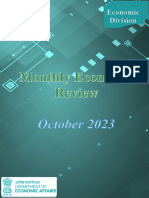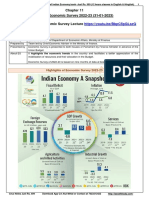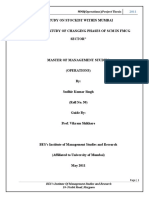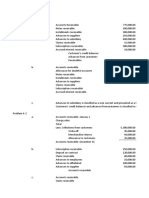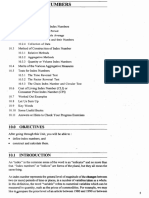�ेस �काशनी PRESS RELEASE
भारतीय �रज़वर् ब�क
RESERVE BANK OF INDIA
0 वेबसाइट : www.rbi.org.in/hindi संचार िवभाग, क� �ीय कायार्लय, शहीद भगत �संह मागर्, फोटर्, मुब
ं ई - 400 001
Website : www.rbi.org.in Department of Communication, Central Office, Shahid Bhagat Singh Marg, Fort,
ई-मेल/email : helpdoc@rbi.org.in Mumbai - 400 001 फोन/Phone: 022 - 2266 0502
December 24, 2024
RBI Bulletin – December 2024
Today, the Reserve Bank released the December 2024 issue of its monthly
Bulletin. The Bulletin includes Bi-monthly Monetary Policy Statement (December 4-6)
2024-25, ten speeches, four articles, and current statistics.
The four articles are: I. State of the Economy; II. Government Finances 2024-25:
A Half-Yearly Review; III. Daily Reserves Maintenance Behaviour of Banks; and IV.
Real Effective Exchange Rate and its Implications for India's Trade Balance.
I. State of the Economy
The global economy continues to exhibit resilience with steady growth and
moderating inflation. High frequency indicators (HFIs) for the third quarter of 2024-25
indicate that the Indian economy is recovering from the slowdown in momentum
witnessed in Q2, driven by strong festival activity and a sustained upswing in rural
demand. The prospects for agriculture and hence rural consumption are looking up
with brisk expansion of rabi sowing. Headline CPI inflation moderated to 5.5 per cent
in November 2024 on the back of easing food prices.
II. Government Finances 2024-25: A Half-Yearly Review
By Harshita Yadav, Aayushi Khandelwal, Kovuri Akash Yadav, Rachit Solanki, Anoop
K Suresh, Samir Ranjan Behera, and Atri Mukherjee
This article presents a review of Government finances for the first half of 2024-25
by looking at the trends in receipt and expenditure of the Centre and States, key
deficit indicators and their financing. Estimates on general government (Centre plus
States) finances for H1 of 2024-25 are also presented.
Highlights:
• The Centre’s revenue collections comprising both tax and non-tax sources have
been buoyant in H1:2024-25. The robust growth in tax receipts was primarily
driven by income tax and goods and services tax (GST) while non-tax revenues
benefitted from the jump in surplus transfer by the Reserve Bank. On the
expenditure front, while revenue expenditure is on track to meet the budgeted
targets, there is a slack in the capital expenditure.
• The growth in States’ revenue receipts during H1:2024-25 was driven by tax
revenues, while there was a contraction in non-tax revenues and grants from the
Centre. On the expenditure front, States sustained the pace of revenue
expenditure during H1:2024-25, while their capital expenditure declined.
• Several States have announced sops in their 2024-25 Budgets; such spending
may divert resources away from critical social and economic infrastructure
development.
� 2
III. Daily Reserves Maintenance Behaviour of Banks
By Sujeesh Kumar, Manjusha Senapati and Praggya Das
Cash reserve ratio (CRR) and its various attributes such as the daily minimum
maintenance, incremental reserves requirements and exemptions on reservable
liabilities are effective tools in the monetary policy toolkit of the Reserve Bank of India
to manage liquidity. This article analyses the daily reserve maintenance behaviour of
scheduled commercial banks (SCBs) in India across various CRR policy changes
especially during the flexible inflation targeting (FIT) period.
Highlights:
• The course of FIT and the introduction of automated sweep-in and sweep-out
(ASISO) facility for banks brought down the level of average daily excess
reserves maintained by SCBs, thus freeing up incremental resources of banks
that may be deployed by banks for productive purposes.
• ASISO facility has significantly reduced the volatility in the banks’ reserve
maintenance and enabled them to manage their daily reserves efficiently.
• Inter-bank volatility in reserve maintenance was low and SCBs better managed
their reserves when the daily minimum maintenance requirement was at 90 per
cent – requirements below this norm were associated with higher volatility.
IV. Real Effective Exchange Rate and its Implications for India’s Trade Balance
by Srijashree Sardar, Dipak R. Chaudhari, Priyanka Priyadarshini, Anshul and
Sangeeta Das
This article examines the factors that impact real effective exchange rate (REER)
in a cross-country setting. Also, it analyses the impact of REER movements on
India’s merchandise trade balance using a non-linear autoregressive distributed lag
(NARDL) model.
Highlights:
• Cross-country estimates of select emerging economies indicate that the REER is
influenced by productivity differential, terms of trade, government expenditure and
net foreign assets.
• The empirical analysis for India indicates the existence of asymmetric association
between trade balance and REER.
• The empirical findings indicate that in India depreciation in REER improves trade
balance while appreciation deteriorates it. The impact of REER depreciation on
trade balance is more than an equivalent REER appreciation in the short-run and
vice versa in the long-run.
The views expressed in the Bulletin articles are of the authors and do not
represent the views of the Reserve Bank of India.
(Puneet Pancholy)
Press Release: 2024-2025/1773 Chief General Manager





















